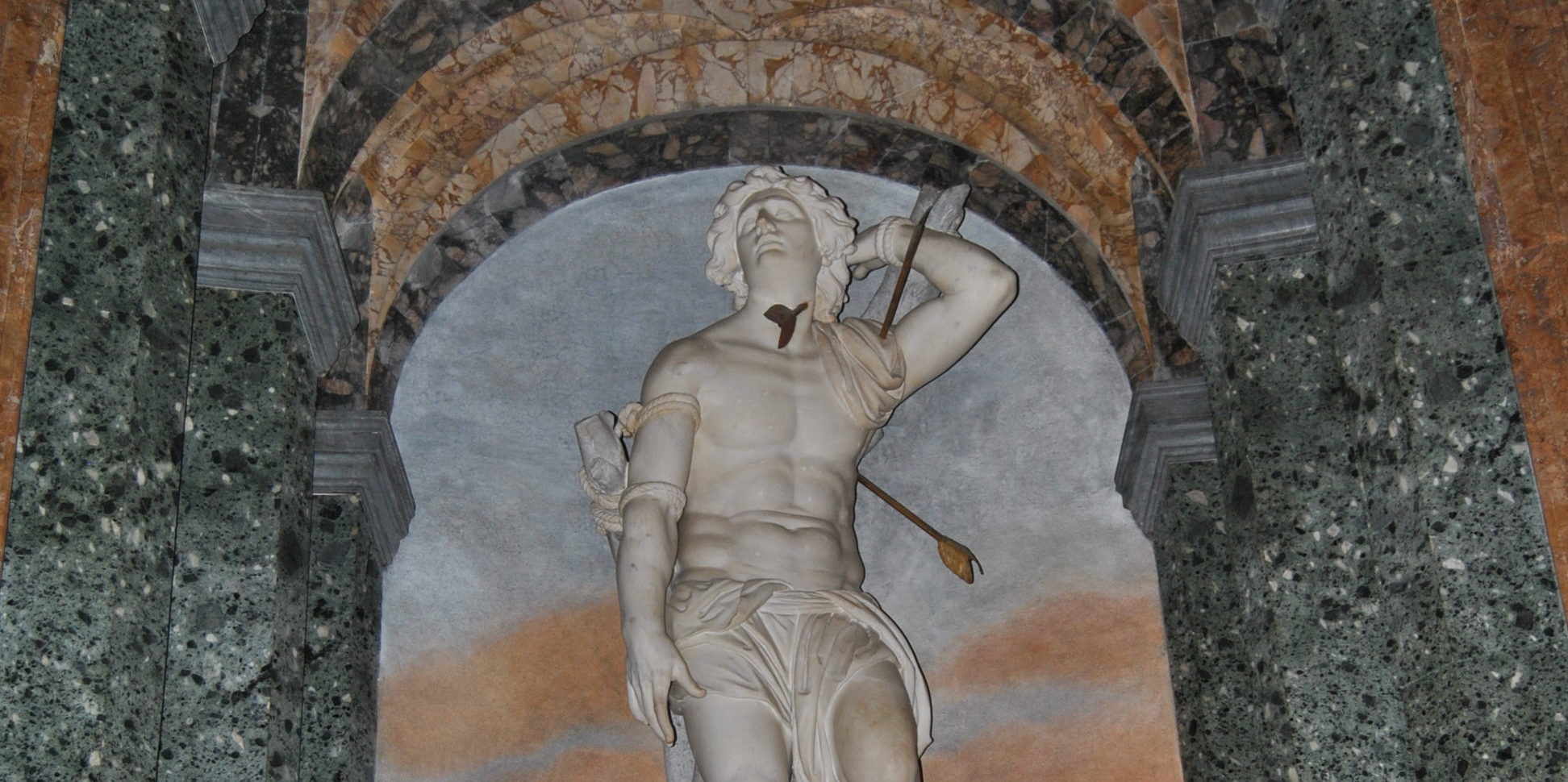Con l'audioguida multilingue, sarete accompagnati da voci esperte che vi guideranno attraverso gli altari riccamente decorati, gli affreschi mozzafiato e gli intricati dettagli che raccontano la storia millenaria di questa meraviglia romana.
Non perdete l'opportunità di vivere un'esperienza unica e coinvolgente alla Chiesa di Sant'Agnese in Agone e alla sua cripta, grazie all'innovativa audioguida multilingue. Un viaggio emozionante vi attende, pronto a svelarvi i segreti della spiritualità e dell'arte di Roma.
Orario di apertura:
dal XXXXX al XXXXX dalle ore XXX alle ore XXXX

The chapel of St Sebastian, located in the south wing of the church is symmetrical to that of St Agnes and has the same architectural and decorative layout. The statue of St Sebastian was made between 1717 and 1719 by Pietro Paolo Campi, a pupil of Pierre le Gros with a classical iconographic image.
Sebastian was originally from Gaul and was educated in the Christian faith in Milan. Enlisted in Diocletian's army around 283, he became head of the first cohort of the imperial guard in Rome. At the outbreak of Diocletian's persecution, he helped many Christians who were imprisoned, and for this he was sentenced to death by the emperor.
The Roman soldier's death sentence was carried out by a group of archers in the open countryside: tied to a tree and pierced by arrows, he was left to be eaten by wild animals. The Roman matron Irene, who went to collect his body, found Sebastian still alive. Taking him home, she cured him. Having recovered his health, he went to the imperial palace to rebuke Diocletian's actions against the Christians. Amazed to see him again, the emperor had him flogged to death and thrown into the city sewer. Lucina, another matron, recovered his body and gave him a Christian burial. He was buried on the Appian Way, in the catacombs that later took his name
The high relief in the first chapel, sculpted by Giovanni Buratti in the years 1661-63, depicts Saint Agnes being led to martyrdom by two soldiers . The saint covered by the long hair that conceals her, like a garment, removing her from the outrageous looks, advances composed and seemingly defenseless towards her destiny. In the vault, around the figure of Christ we also find four episodes of the life of Saint Agnes: Saint Agnes refuses the offer of marriage, Saint Agnes led in the presence of the praetor, Saint Agnes among the flames and Saint Agnes to martyrdom.